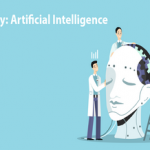Check out the glossary for definitions on testing essentials, and DevOps related terms.

Action Based Testing (ABT)
A modular-design and action-driven test method that provides a systematic approach to increase the success of automated testing. Modular-design addresses the challenges of test planning and test case management through efficient test organization.
Action-driven test development eliminates the majority of the programming work required to automate and maintain tests long-term.
Source: https://www.testarchitect.com/support/action-based-testing
Continuous Integration/Continuous Delivery (CI/CD)
Continuous integration and continuous deployment merge development with testing, allowing developers to build code collaboratively, submit it to the master branch, and check for issues.
Source: https://www.atlassian.com/continuousdelivery/ci-vs-ci-vs-cd
Peer Testing
A way of evaluating or cross-checking the code written by developers as the developers need to be at par with each other. The time for peer testing can be mutually decided upon by the developers, which could be a weekly or a fortnightly analysis of their respective codes.
Source: http://www.professionalqa.com/peer-testing
Progressive Web Applications (PWAs)
Web applications that load like regular web pages or websites but can offer the user functionality such as working offline, push notifications, and device hardware access traditionally available only to native applications.
Source: https://en.wikipedia.org/wiki/Progressive_web_applications
Test Case
A specification of the inputs, execution conditions, testing procedure, and expected results that define a single test to be executed to achieve a particular software testing objective, such as to exercise a particular program path or to verify compliance with a specific requirement.
Source: https://en.wikipedia.org/wiki/Test_case
Test Harness
A collection of software and test data configured to test a program unit by running it under varying conditions and monitoring its behavior and outputs. It has two main parts: the test execution engine and the test script repository.
Source: https://en.wikipedia.org/wiki/Test_harness
Test Plan
A detailed document that outlines the test strategy, testing objectives, resources (manpower, software, hardware) required for testing, test schedule, test estimation, and test deliverables. The test plan serves as a blueprint to conduct software testing activities as a defined process which is minutely monitored and controlled by the test manager.
Source: http://www.guru99.com/what-everybodyought-to-know-about-test-planing.html
Tour Testing
A structured approach to exploratory testing where the exploration of a product is organized around a specific theme. The theme informs the type of questions that are asked and the type of observations a tester should be making.
Source: https://reqtest.com/testing-blog/what-is-tour-testing-a-structured-approach-to-exploratory-testing/


















